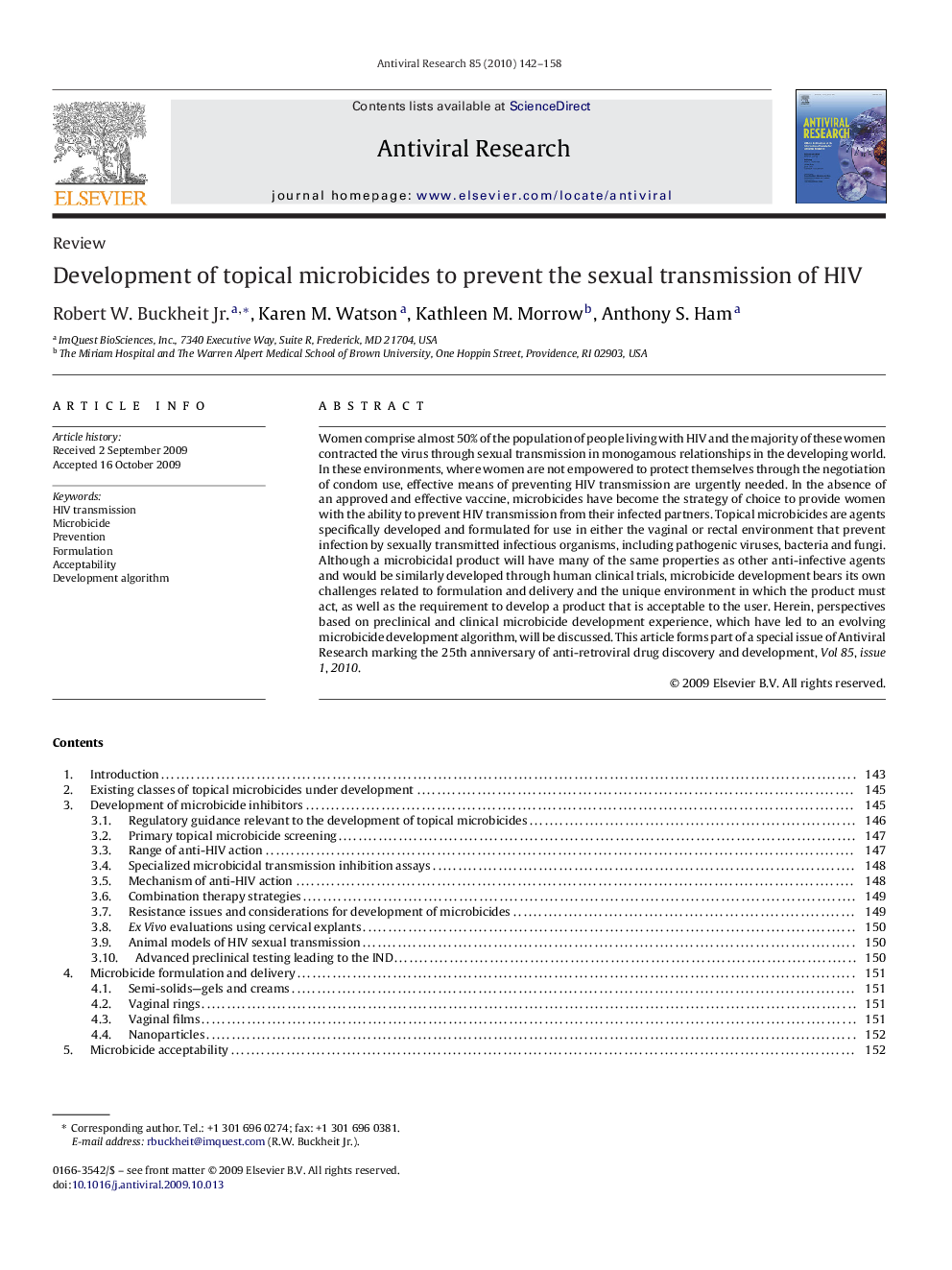| Article ID | Journal | Published Year | Pages | File Type |
|---|---|---|---|---|
| 2510781 | Antiviral Research | 2010 | 17 Pages |
Women comprise almost 50% of the population of people living with HIV and the majority of these women contracted the virus through sexual transmission in monogamous relationships in the developing world. In these environments, where women are not empowered to protect themselves through the negotiation of condom use, effective means of preventing HIV transmission are urgently needed. In the absence of an approved and effective vaccine, microbicides have become the strategy of choice to provide women with the ability to prevent HIV transmission from their infected partners. Topical microbicides are agents specifically developed and formulated for use in either the vaginal or rectal environment that prevent infection by sexually transmitted infectious organisms, including pathogenic viruses, bacteria and fungi. Although a microbicidal product will have many of the same properties as other anti-infective agents and would be similarly developed through human clinical trials, microbicide development bears its own challenges related to formulation and delivery and the unique environment in which the product must act, as well as the requirement to develop a product that is acceptable to the user. Herein, perspectives based on preclinical and clinical microbicide development experience, which have led to an evolving microbicide development algorithm, will be discussed. This article forms part of a special issue of Antiviral Research marking the 25th anniversary of anti-retroviral drug discovery and development, Vol 85, issue 1, 2010.
